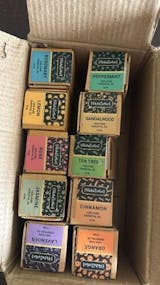Kojic acid is a skin-whitening agent that has been used for centuries in Japan. It is made from the fermentation of rice or soybeans and then mixed with other ingredients to form a cream, lotion, or liquid. Kojic acid can be found as an ingredient in many things such as makeup products (especially those designed for people with darker skin tones), facial masks, soaps, toothpaste, creams and gels.

What is Kojic Acid?
Kojic acid is produced by some different types of fungi or by the fermentation of sake, a Japanese rice wine. Dermatologists frequently employ kojic acid as a potent topical skin-lightening agent to treat hyperpigmentation, including melasma, age spots, black spots, and sun spots. It is described as a tyrosinase inhibitor and skin-lightening agent from plants.
This component is frequently found in skin care products. It functions by preventing the production of one of the proteins needed for the skin to create too much melanin. It was taken from a strain of Aspergillus called Aspergillus oryzae that was cultured on steamed rice and was originally discovered in 1907.
Top 5 - Kojic Acid Benefits for Skin
Kojic acid lightens your skin by preventing the synthesis of melanin. You frequently get dark patches and an uneven skin tone due to melanin overproduction. Tyrosine is an amino acid that your body uses to generate melanin. Tyrosine's action is inhibited by kojic acid, and this in turn prevents the synthesis of melanin.
Here is how kojic acid benefits your skin:
1: Reduction of Hyperpigmentation
Skin hyperpigmentation, dark patches, and freckles can all be brought on by too much sun exposure. Your skin will become clearer and more spot- and patch-free if you apply kojic acid to your face. Additionally, your skin is allegedly made to appear whiter overall. Without causing your skin any discomfort, kojic acid can be used to cure melasma.
2: Has Anti-Ageing Properties
In addition to reducing wrinkles and other symptoms of ageing, kojic acid also cures UV damage. Tyrosinase, the enzyme responsible for melanin formation and the ageing process of the skin, is reduced by kojic acid.
3: It has Antibacterial Qualities.
Despite not having particularly potent antibacterial capabilities, kojic acid is somewhat efficient against a variety of bacterial strains and can prevent their growth even at low concentrations.

4: It has Fungus-Resistant Qualities
Kojic acid is anti-fungal. It was discovered to have a suppressive effect on some fungal strains and is very effective in treating yeast infections like athlete's foot, ringworm, and candidiasis. Kojic acid, when applied regularly to the skin, aids in preventing bacterial and fungal skin problems.
5: Treats Hyperpigmentation Caused by Hair Removal
Kojic acid can aid with ingrown hairs, scarring from razor burns, and other problems associated with hair removal. Skin returns to its normal tone if used judiciously.
How to Use Kojic Acid for Skin Whitening?
- Start by dabbing a small area of your forehead with the kojic acid product in the evening when your facial skin is thickest.
- If there is no irritation after 24 hours, begin treating your skin with the product as a spot treatment every night.
- Apply the kojic acid product morning and night if there is no irritation after a week and you want to be harsher with the treatment.
- You have two options when using kojic acid: you can either use it as a spot treatment on the areas of your face that are hyper-pigmented, or you may use it as a general facial toner.
- When introducing a new kojic acid to your skin, start by using it once or twice a week if your skin is extremely sensitive to make sure your skin can withstand the component.
- Additionally, it is advised to only use kojic acid in doses of 1% or less for people with sensitive skin to prevent irritation.
Use of Kojic Acid for Skin - Precautions To Be Taken
Kojic acid is a potent component, as you may have already realized. But with tremendous power also comes great responsibility, including the duty to consider all dangers and take all essential precautions to protect your skin.

You should take into consideration the following:
- Be sure to follow the manufacturer's directions when using kojic acid products. Ask for usage instructions and follow them if your doctor prescribed a product.
- Never apply kojic acid to skin that is broken.
- Do not overlook any rash or skin changes you experience after using kojic acid products. Stop using it right away, and go to the doctor.
- People with skin blemishes, hyperpigmentation, scarring, and dark areas can benefit from kojic acid. Kojic acid should not be used by anyone with a specific skin problem. Additionally, allergy sufferers should speak with a doctor before using it.
Conclusion
Kojic acid is frequently used as a bleaching agent in cosmetics products. By regularly applying kojic acid to your skin, you can lessen dark spots, stop the formation of bacteria and fungi, and enhance the texture of your skin as a whole. Vedaoils is a leading manufacturer of raw materials for beauty products, if you are thinking about incorporating kojic acid in your regime you can order yours from their website at reasonable rates.
Frequently Asked Questions (FAQ)
Question 1: How Long Can Kojic Acid Begin to Lighten Skin?
Ans: Kojic acid needs to be applied consistently for over a month to lighten skin. However, within the first two weeks, you will begin to see the changes.
Question 2: Can I Use Kojic Acid Daily?
Ans: If your skin is not sensitive, you can use kojic acid every day. You should only apply it once or twice a week if you have sensitive skin.
You May Also Like:
Essential Oils for Toenail Fungus
Tea Tree Oil For Nail Fungus
Homemade Anti Aging Face Pack
Homemade Anti Aging Serum
Castor Oil For Skin Pigmentation










 Sign in
Sign in Register now
Register now My Reward Points
My Reward Points











